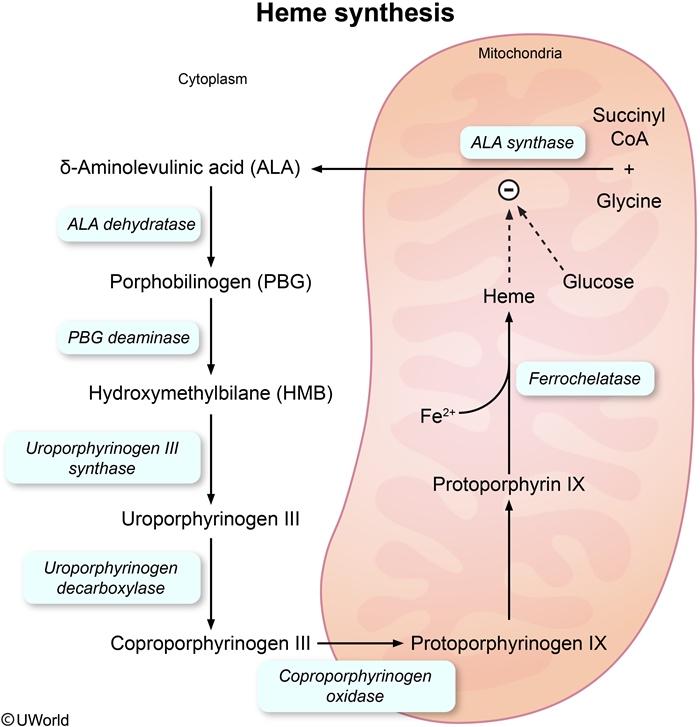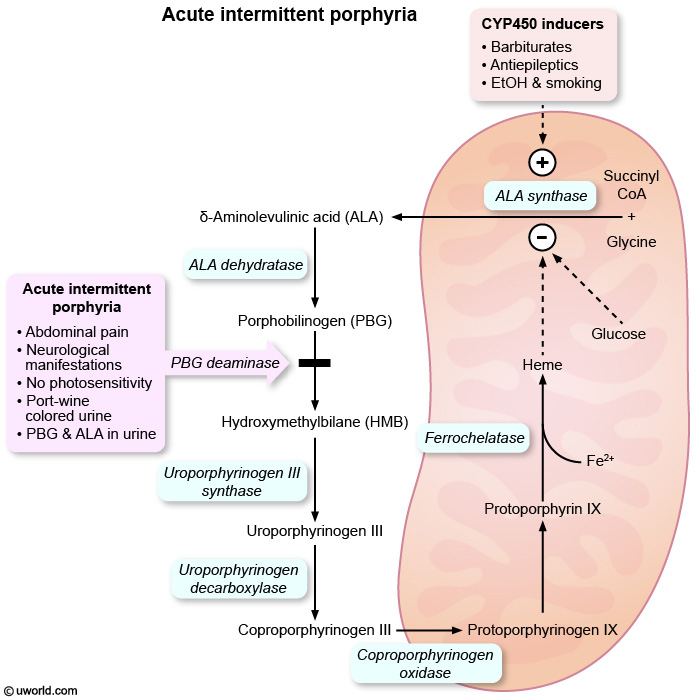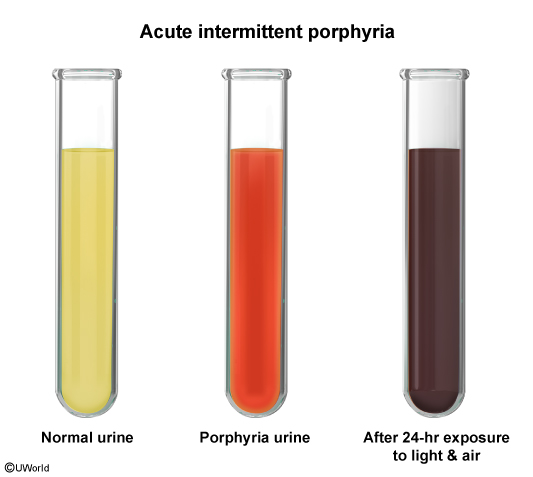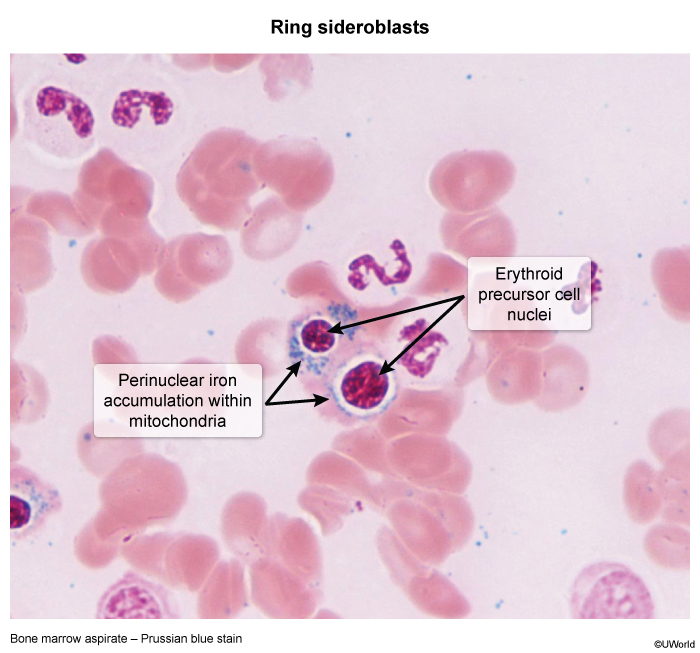Porphyria
Article Sections
Introduction
Porphyrias are a group of rare metabolic disorders characterized by defects in heme biosynthesis that lead to the accumulation of intermediate substrates. These substrates are toxic to the nervous system and skin, resulting in neurovisceral attacks and/or photosensitivity. It has been suggested that these conditions may have inspired vampire folklore.
Pathogenesis and clinical manifestations
Heme is a molecule that consists of a ring-shaped structure (porphyrin) surrounding an iron atom. It is synthesized primarily in the liver for incorporation into cytochrome P450 (CYP450) enzymes and in the bone marrow for incorporation into hemoglobin during erythropoiesis. Heme production involves a series of 8 enzymatic reactions (Figure 1), and the disruption of any of these steps can lead to the accumulation of porphyrin intermediates, which are toxic in high concentrations and create unique porphyria subtypes.
Continue Learning with UWorld
Get the full Porphyria article plus rich visuals, real-world cases, and in-depth insights from medical experts, all available through the UWorld Medical Library.
Figures



Images
